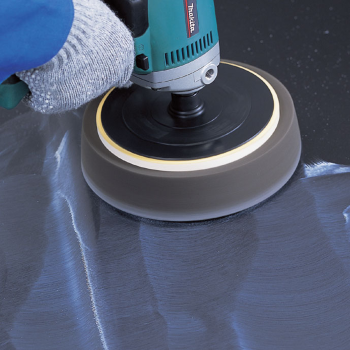Polishing refers to a processing method that uses mechanical, chemical or electrochemical effects to reduce the surface roughness of the workpiece to obtain a bright and flat surface. It is a modification process of the workpiece surface using polishing tools and abrasive particles or other polishing media. The following are several commonly used polishing methods.

Mechanical polishing
Mechanical polishing is a polishing method that removes the protruding parts of the workpiece surface by cutting or plastic deformation of the material surface to obtain a smooth surface. Generally, oilstone strips, wool wheels, sandpaper, etc. are used, and manual operation is the main method. For high surface quality requirements, ultra-fine grinding and polishing can be used. Ultra-fine grinding and polishing uses a special grinding tool, which is pressed tightly against the workpiece surface in a grinding and polishing liquid containing abrasives and rotates at high speed. This technology can achieve a surface roughness of Ra0.008 μm, which is the best surface roughness among various polishing methods.
Chemical polishing
Chemical polishing is a material in a chemical medium that allows the microscopic protruding parts of the surface to dissolve preferentially over the concave parts, thereby obtaining a smooth surface. This method can polish workpieces with complex shapes and can polish many workpieces at the same time with high efficiency. The surface roughness obtained by chemical polishing is generally Ra10 μm.
Electrolytic polishing
The basic principle of electrolytic polishing is the same as that of chemical polishing, which relies on selectively dissolving the tiny protrusions on the surface of the material to make the surface smooth. Compared with chemical polishing, it can eliminate the influence of cathode reaction and has better effect.
Ultrasonic polishing
Ultrasonic polishing is a processing method that uses ultrasonic vibration of the tool section to polish brittle and hard materials through abrasive suspension. The workpiece is placed in the abrasive suspension and placed in the ultrasonic field together. Relying on the oscillation of the ultrasonic wave, the abrasive is ground and polished on the surface of the workpiece.
Fluid polishing
Fluid polishing relies on the flowing liquid and the abrasive particles, it carries to flush the surface of the workpiece to achieve the purpose of polishing. Fluid power grinding is driven by hydraulic pressure. The medium is mainly made of special compounds (polymer-like substances) with good flowability under low pressure and mixed with abrasives. The abrasive can be made of silicon carbide powder.
Magnetic grinding and polishing
Magnetic grinding and polishing uses magnetic abrasives to form abrasive brushes under the action of a magnetic field to grind the workpiece. This method has high processing efficiency, good quality, and easy to control processing conditions.
Electrospark ultrasonic composite polishing
In order to increase the polishing speed of workpieces with a surface roughness Ra of 1.6 μm or more, ultrasonic waves and a dedicated high-frequency narrow pulse high-peak current pulse power supply are used for composite polishing. The ultrasonic vibration and the corrosion of the electric pulse act on the workpiece surface at the same time, quickly reduces its surface roughness.

